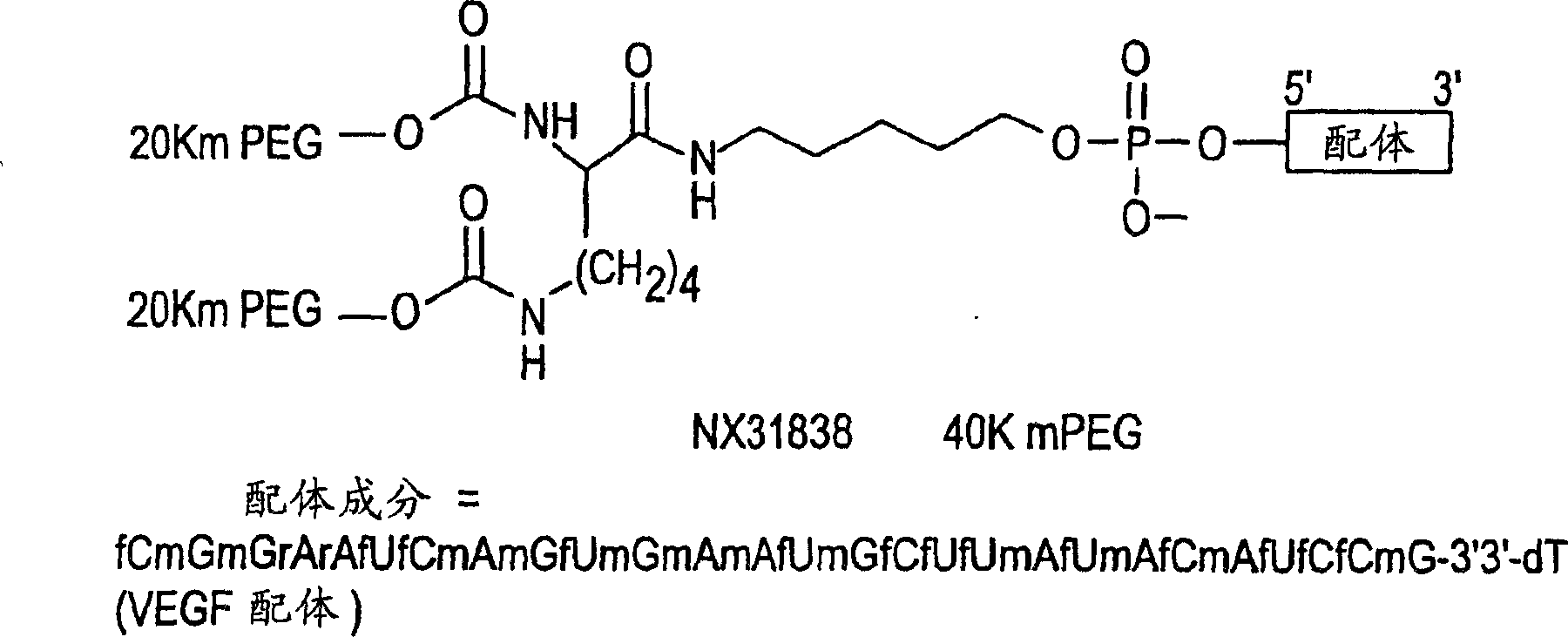Methods for treating ocular neovascular diseases
A treatment method, new blood vessel technology, applied in treatment, electrotherapy, sensory diseases, etc., can solve problems such as high recurrence rate
- Summary
- Abstract
- Description
- Claims
- Application Information
AI Technical Summary
Problems solved by technology
Method used
Image
Examples
Embodiment 1
[0084] Embodiment 1: skin blood vessel permeability test (Miles test)
[0085] One of the biological activities of VEGF is to increase vascular permeability through specific binding to receptors on vascular endothelial cells. This interaction loosens the tight endothelial junction with consequent leakage of vascular fluid. Vascular leakage induced by VEGF in vivo can be determined based on Evans blue dye leaking from guinea pig vasculature as a result of percutaneous injection of VEGF (Dvorak HF, Brown LF, Detmar M, Dvorak AM. "Vascular permeability factor / vascular Endothelial growth factor, microvascular hyperpermeability and angiogenesis" - Am J Pathol. 1995, 146: 1029.) Similarly, this assay can be used to determine the ability of compounds to block this biological activity of VEGF.
[0086] VEGF 165 (20-30 nM) premixed with EYE001 (30 nM-1 μM) and then injected percutaneously into the shaved skin of the back of guinea pigs. The amount of Evans blue dye leakage around ...
Embodiment 2
[0087] Example 2: Corneal Angiogenesis Test
[0088] will contain VEGF 165 (3 pmol) of methacrylate polymer particles were implanted into the rat corneal stroma to induce blood vessel growth into normal avascular cornea. EYE001 was administered intravenously to rats at doses of 1, 3 and 10 mg / kg once or twice a day for 5 days. At the end of the treatment period, photomicrographs were taken of all individual corneas. The extent of neovascularization in corneal tissue and its inhibition by EYE001 was quantified by standardized morphometric analysis of photomicrographs.
[0089] Data (not shown) demonstrated that systemic treatment with EYE001 produced a significant inhibition (65%) of VEGF-dependent angiogenesis in the cornea compared to phosphate buffered saline (PBS). Once-daily treatment with 10 mg / kg had the same effect as twice-daily treatment. The 3 mg / kg dose had the same activity as the 10 mg / kg dose, but at 1 mg / kg there was apparently no significant efficacy.
Embodiment 3
[0090] Example 3: Research on Retinopathy of Prematurity
[0091] Although ROP is clearly distinct from diabetic retinopathy and AMD, the ROP mouse model has been used to demonstrate the role of VEGF in the abnormal retinal vascularization that occurs in this disease (Smith LE, Wesolowski E, McLellan A, Kostyk SK, Amato DR, Sullivan R, D'Amore PA. "Oxygen-induced retinopathy in mice" - Invest Ophthalmol Vis Sci. 1994, 35: 101.). These data provide a rationale for studying the anti-angiogenic effects of EYE001 in this model.
[0092] 9, 8, 8, 7 and 7 mouse litters were placed in an air chamber or hyperoxic chamber and treated intraperitoneally with PBS or EYE001 (1, 3 or 10 mg / kg day) . The end point of the experiment was evaluated by microscopically identifying and counting neovascular sprouts on 20 tissue sections from each eye of all treated and control mice, i.e. neocapillaries passing through the inner limiting membrane of the retina into the vitreous humor. Vascular ...
PUM
 Login to View More
Login to View More Abstract
Description
Claims
Application Information
 Login to View More
Login to View More - R&D Engineer
- R&D Manager
- IP Professional
- Industry Leading Data Capabilities
- Powerful AI technology
- Patent DNA Extraction
Browse by: Latest US Patents, China's latest patents, Technical Efficacy Thesaurus, Application Domain, Technology Topic, Popular Technical Reports.
© 2024 PatSnap. All rights reserved.Legal|Privacy policy|Modern Slavery Act Transparency Statement|Sitemap|About US| Contact US: help@patsnap.com








